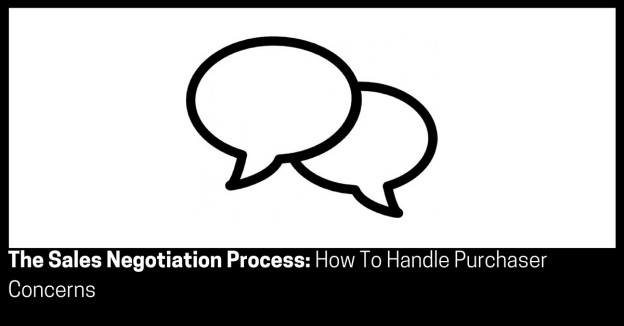Approximate read time: 10 minutes
No one cares about you…
As Tyler Durden in Fight Club once said: “you are not special. You’re not a beautiful and unique snowflake. You’re the same decaying organic matter as everything else. We’re all part of the same compost heap. We’re all singing, all dancing crap of the world.”
Have I got your attention?
That’s not fair, your family and friends care about you.
Actually, let me rephrase, people care about you, but if they don’t know, like or trust you in the first instance, they probably only care about how you can help them.
Okay, some context is needed.
What do you say when a prospect says “no”?
Unless you know exactly how to reply, or worse still, do not address the concern, then you will not satisfy their question and thus, will not be able to progress with the sale.
This guide is written to help you when you are in these situations.
Prospects may have several objections to a sales communication.
Let’s explore a case study…
There is a company I am potentially a customer for.
I’m their prospect.
But, every time I get communication from them, it’s blatantly self-promoting.
How good they are, how they are going to be “successful”, how they are “killing it”, etc. ad nausea.
Congrats, but I don’t really care.
Not because I’m a downer or have a severe case of tall poppy syndrome.
Far from it!
Why should I care?
How does any of what they say relate to me as a prospect, God forbid, an actual customer?
Self-promoting to prospects and customers is not bad, as long as it’s related to them.
As the saying goes, “Help 1,000 people become successful and they’ll help you become successful, not the other way around.”
I don’t really care if you are successful; it’s great if you are, but I care that I am successful and that you are successful as a result.
If you are honest with yourself – brutally honest – you are likely the same.
It’s called reciprocity and it’s a powerful principle of influence.
All this self-promoting is self-indulgent and doesn’t make me want to be their customer.
- How do I know if their offer works?;
- How do I know if what they offer will work for me?;
- How do I know what I’ll get from their offer?;
- And so on…
I’ll cover this more in a moment.
Their messaging should be addressing these questions directly, not telling me how much they are “killing it.”
The former gets customers, the latter reduces trust.
An expert doesn’t tell me about how much they know, they SHOW me how much they know.
You can’t argue with results.
Talk is cheap, and anyone can do it.
Show people, don’t tell them.
But relate the demonstration to them.
You are an expert.
“Cool, why should I care?”
The first formal thing I learned in sales at age 14 was, “The customer is king, and they are always right.”
Neither the founder, the CEO or the company is king, nor are they right.
Further, they should be telling me how simple they make the life for me, not how much they are “killing it.”
Let’s go deeper…
Customers purchase products, services or solutions when they want to move away from their current situation, towards a new situation – away from pain or towards pleasure, ideally in the fastest way possible.
Your product, service or solution is actually a barrier to moving customers away from pain or towards pleasure.
Think about it this way, the most direct path for a customer would be a short two-step path:
- Current situation (pain); then
- New situation (pleasure).
With your product, service or solution, the path for a customer is actually a longer three-step path:
- Current situation;
- Your product, service or solution; then
- New situation.
This is the reason humans want magic-pills or silver-bullet products, services or solutions, and results yesterday!
Magic-pills or silver-bullets rarely exist, so you need to sell people what they want (two-step path), but you also have to give them what they need (three-step path).
The more you can speed up or automate your product, service or solution, the better.
You want to reduce the time and effort it takes to move from Step 1 to Step 3 to a minimum.
The faster or simpler you can move a customer away from pain or towards pleasure, the more value you add to them and the more you can charge for doing so via your product, service or solution.
The company would do so much better if it made just one simple change.
This seems so obvious to me.
But here it is:
“[Their self-promoting piece], and this [reason] is why [self-promoting piece] importing to you and specifically how you will benefit as a prospect or customer from it.”
Mind blown?
I’ve basically given them the blueprint to make me become their customer, without triggering buying concerns.
So, make the connection between pain and gain for people clear and simple.
It may be clear to your brand, but it’s not always clear to your prospects and customers.
Prospects and customers aren’t dumb or stupid. Everyone just communicates differently.
Connecting communication to pain and gain is just a sliver of the marketing and sales communication puzzle.
Some of the other pieces have been dropped subtly in this guide, how Meta 🙂
Can you pick them?
So with the context set, let’s now turn to discuss how to handle purchaser objections.
Here are the steps:
- Step 1: Determine The Objection; and
- Step 2: Answer The Objection.
Let’s begin with…

1) Determine The Objection
…This step is about determining the objections prospect and customers have.
Purchasers object to your sales communication for various reasons.
I am using the phrase “sales communication” very loosely here to cover any situation you ask a prospect or customer to do anything.
In other words “buy” your request, regardless if money is exchanged.
The main objections prospects and customers may have (in rough order) include that they:
- Have no need or willingness to pay;
- Have the wrong timing and it’s not urgent;
- Have no buying authority or ability to pay;
- Have no budget or ability to pay;
- Do not know what they get with the product, service or solution;
- Do not like or trust your brand;
- Do not believe (i.e. trust) the product, service or solution will work;
- Do not believe (i.e. trust) the product, service or solution will work for them; and
- Do not think the product, service or solution is valuable.
If you recall The Human Purchasing Process, the first four objections should be addressed at the Qualification and Needs Analysis milestone.
The rest should be addressed at the Sales Presentation milestone.
These main objections could be expressed by prospects and customers in the following ways:
- “I’m not interested”;
- “I can’t afford it”;
- “I can’t make the decision”;
- “Not right now”;
- “How do I know it works?”;
- “This is risky for me”;
- “I don’t know you”;
- “What do I get?”; and
- “I’ll think about it”.
Of course, these are just illustrations as the objections could be expressed in infinite other ways.
So how do you address these as a brand?
Of course, the exact details of how to do this are beyond the scope of this guide.
This leads up to answering the objection…

2) Answer The Objection
…This step is about answering prospects and customers buying objections.
After you have determined their buying objections, it’s time to address them so they become customers.
Here are some tried-and-true ways to address the same sales concerns listed previously:
- Ask them demographic and psychographic questions to re-qualify and segment them and explain what type of customer the product, service or solution is intended to benefit and those it cannot help;
- Re-contact them at a later date, inject scarcity and provide incentives or bonuses along with the purchase;
- Same as 1;
- Ask them demographic and psychographic questions to re-qualify and segment them and ask who the decision maker is;
- Explain the product, service or solution features;
- Give them your product, service or solution expertise, credibility or credentials in the form of informational and educational marketing and sales content to teach about your brand and give them the brand story behind the product, service or solution;
- Provide them with social proof in the form of testimonials and success stories, give them the story behind the product, service or solution, give them your product, service or solution expertise, credibility or credentials in the form of informational and educational marketing and sales content to teach about your brand and explain what type of person the product, service or solution is intended to benefit and those it cannot help ;
- Provide social proof via case studies, provide a risk reversal in the form of a money back guarantee, give them the story behind the product, service or solution, give them your product, service or solution expertise, credibility or credentials in the form of informational and educational marketing and sales content to teach about your brand, show them the benefits, advantages, results or outcomes that your product, service or solution provides and show your product, service or solution is different or unique; and
- Give them the product, service and solution price and translate the value of that price for them into different currencies such as time and effort.
And based on these here are some potentially related principles of influence based on Robert Cialdini’s book Influence: The Psychology of Persuasion:
- Nothing of note;
- Nothing of note;
- Nothing of note;
- Scarcity;
- Proof, Authority and Reciprocity;
- Proof, Authority and Reciprocity;
- Liking (as well as knowing & trusting your brand), Reciprocity and Authority;
- Nothing of note; and
- Nothing of note.
All of these ways of addressing concerns are tied together with the “Commitment and Consistency” principle of influence in the same book.
There are also other digital marketing and sales objection scenarios that are very common, these include:
- No email clicks;
- No email opens;
- No advertisement clicks;
- No opt-in;
- No purchase;
- No next purchase;
- No recommendation/testimonial; and
- No referral.
Possible ways to address these are:
- Having more enticing subject lines;
- Having more enticing sales scripts and offers;
- Having more enticing headlines and offers;
- Improving offers or way of communicating;
- Improving offers (such as down selling) or way of communicating;
- Improving offers (such as down selling) the product, service or solution or way of communicating;
- Improving the product, service or solution or way of communicating; and
- Improving the product, service or solution or way of communicating.
If your prospects and customers do not do the following:
- Come to your brand (from external sources);
- Consume content;
- Opt-in or segment;
- Purchase a low priced offer;
- Purchase a main offer;
- Purchase again;
- Give a testimonial, case study or success story; or
- Recommend or refer another customer.
Then you need to know what to do:
- Improve content or the sales script;
- Improve the sales script;
- Improve content or the sales script;
- Improve the sales script;
- Improve the sales script;
- Improve the sales script;
- Improve the product, service or solution; and
- Improve the product, service or solution.
Of course, the exact details of how to do this are beyond the scope of this guide.

Take Action
You made it…
You now have a solid overview of the marketing and sales objection process to help you understand, handle and overcome marketing and seals objections.
That’s the full Sales Negotiation Process and will be more than enough for you to get started on your own.
You can get the printed illustrated Process Map of this and 20 others for free, here
And if you’re serious about marketing and selling more, the logical next step is to contact me to help you do it yourself, have me do it with you, or have it all done for you.
This maybe the momentum you need to get great marketing and sales results.
Now let’s learn about The Marketing & Sales Engagement Process.
Or do you simply want more like this?
Join below to be notified immediately about new content and more. No annoying daily emails and no spam – just good content when it’s posted.

